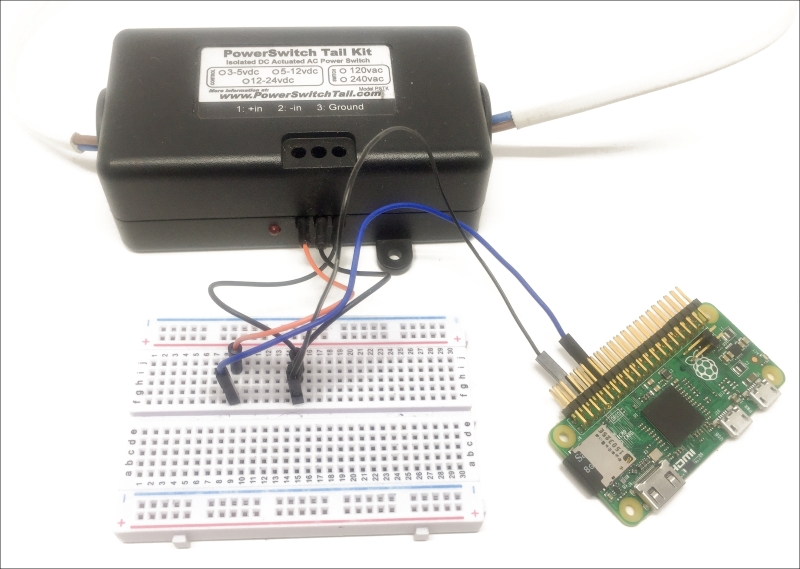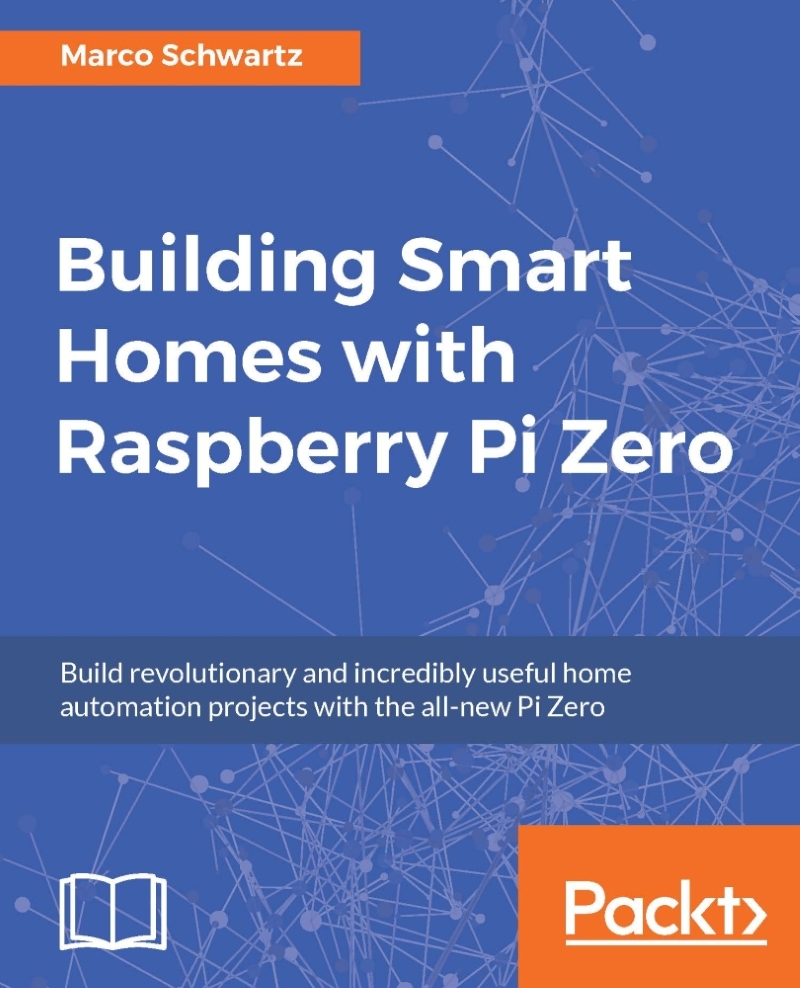Controlling home appliances
In the final section of this chapter, we are going to see how to control appliances in your home that can only be set to on or off, for example, lamps, but also heaters, coffee machines, and other appliances. In this section, you are going to learn how to control a simple desk lamp using your Raspberry Pi Zero.
Let's first see how to assemble the project. Simply connect the Vin+ pin of the PowerSwitch Tail Kit to the GPIO18 pin on the Raspberry Pi Zero, and the two remaining pins of the PowerSwitch Tail to GND.
The following image shows the final result:

Of course, after this you need to connect a lamp to the project. For that, I used a simple 30W desk lamp. You simply need to connect the appliance you want to control to the female plug of the PowerSwitch Tail, and then connect it to the mains electricity via the male power plug.
We are now going to see how to control the lamp using a simple interface, which will run on our Raspberry Pi. For that, we'll again use...
























































